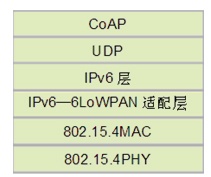In addition to the various physical layer connectivity used to support "fog" layer devices, Internet of Things (IoT) gateways must be able to support the protocols used by each type of Internet of Things (IoT) device. These protocols include Home AutomaTIon, Smart Energy, 802.11n, 6LoPAN and a variety of other protocols. Each type of protocol requires a certain amount of processing workload to manage the protocol stack associated with each protocol.
1. Home automation (HA) Some home automation standards, such as LonWorks, CEBus and X-10, have been introduced by the industry's pioneers. X-10 products should be slow in response (in a 60 Hz power supply system, it takes 0.883 seconds to transmit a command), and the anti-interference performance is poor (this is caused by the signal carrier transmitting in the power line, which is a serious problem in China). This has brought substantial difficulties to the promotion and application of X-10. CEBus is a relatively complete open system that defines the transmission standard for signals in almost all mediums and requires control signals to be transmitted at the same transmission speed (10 KBPS) in all media, effectively To avoid the "bottleneck" problem that may occur in signal transmission, any electrical products that comply with CEBus standards can be directly interconnected and communicated. The addressing capacity is more than 4 billion, which is comparable to the Internet. CEBus has stronger anti-interference ability than X-10, and its control function is also very rich, becoming the "maximum challenger" of X-10. The most basic component of LonWorks is the Neuron chip, which has both communication and control functions. The chip contains three microprocessors and solidifies the operating system, operating time database and communication protocol into the chip.
2. Smart Energy Freescale has developed the Smart Energy Management System, which provides key components and software, as well as a library of metering protocols, to form the nodes of the entire system, and then leverages the company's Cloud technology. This complete solution effectively controls and manages energy consumption.
3. 802.11n is a technology developed on top of 802.11g and 802.11a. The biggest feature is the rate increase. The theoretical rate is up to 600Mbps (currently the mainstream is 300Mbps). 802.11n can operate in both 2.4GHz and 5GHz bands. Wi-Fi Alliance's 802.11a/b/g behind a wireless transmission standard protocol, in order to achieve high-bandwidth, high-quality WLAN services, wireless LAN to achieve Ethernet performance levels, 802.11 task group N (TGn) came into being . The 802.11n standard was officially approved by the IEEE until 2009, but there are many vendors using MIMO OFDM technology, including TP-Link, D-Link, Airgo, UbiquiTI, Bermai, Broadcom, and Agere Systems, Atheros, Cisco, Intel, etc. Etc., products include wireless network cards, wireless routers, and so on.
4. 6LoWPAN The task of the IETF 6LoWPAN Working Group is to define how to use the IEEE 802.15.4 link to support IP-based communications while complying with open standards and ensuring interoperability with other IP devices.
Since many devices in the wireless Internet of Things are resource-constrained, these devices have a small amount of memory space and limited computing power. To this end, the IETF's CoRE working group develops relevant REST-style application layer protocols for restricted nodes. This is the CoAP protocol being developed by the CoRE Working Group. The TCP/IP protocol stack is not suitable for resource-constrained devices, so a 6LoWPAN protocol stack is proposed. CoAP is an application layer protocol in the 6LoWPAN protocol stack. 6LoWPAN makes IPv6 available for low-power, lossy networks based on the IEEE802.15.4 standard. The 6LoWPAN protocol stack is shown in Figure 1 (below).

The lower two layers of the protocol stack use 802.15.4 PHY/MAC with an IPv6-6LoWPAN adaptation layer in between, the transport layer uses UDP protocol, and the application layer uses CoAP protocol. It includes the smallest subset of REST and stateless mapping to HTTP. The communication host uses the CoAP protocol to support a stable communication architecture to enable wireless connection between sensor nodes and the Internet.
More exciting, welcome to lock in August "Wireless Communications Special Issue", effectively overcome the design difficulties!

Shenzhen Guan Chen Electronics Co., Ltd. is a High-tech enterprise that integrates R&D, design, manufacture of computer peripheral products.The products include Thunderbolt Docking Station,USB Docking Station,USB Hubs,USB Adapter, Thunderbolt Cable , SSD Enclosure , HDD Enclosure . Our company adheres to the principle and motto of Being sincere, Responsible, Practical to meet the needs of markets and customers with high quality technology and management. We commit ourselves to new product development and also stress the exploring of international markets.
Our company owns a professional production team and establishes strict quality control standard, so we can provide high quality products and service for customers. We have Grapgic designer,3D Deisnger and Electronic designer to provides professional OEM/ODM service. Our factory covers an area of 1,000-2000 spare meters, which houses 100-200 workers, so our production capacity reaches 50,000 pieces every day.With more than 10 engineers focusing on research and development, our private model attracts much among different markets. Over 100 new designed models are released per year.There are also 3 lean production lines to fullfill small quatity orders production for variety of models.
Our Thunderbolt 3 Docking Station has passed thunderbolt certified by intel and apple.Our product also all can meet with CE, RoHS, UL, FCC and other related certification.And our factory also meets legal environmental standards ensuring your order is delivered. We have a very good reputation at home and abroad. Our products are mainly exported to Europe, USA and Southeast Asia. We provide one-stop-service and promote customers achieve rapidly development. Customer comes First, Quality Ranks First, and Reasonable Price.Guanchen will be your faithful partner from China.
Nvme Ssd Enclosure,Aluminum External Enclosure,10Gbps External Pcie Ssd Enclosure,External Pcie Nvme M.2 Ssd Enclosure
Shenzhen GuanChen Electronics Co., Ltd. , https://www.gcneotech.com
